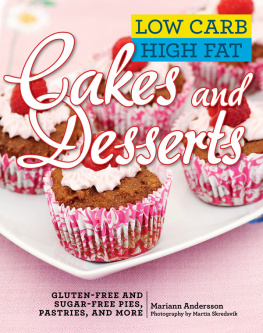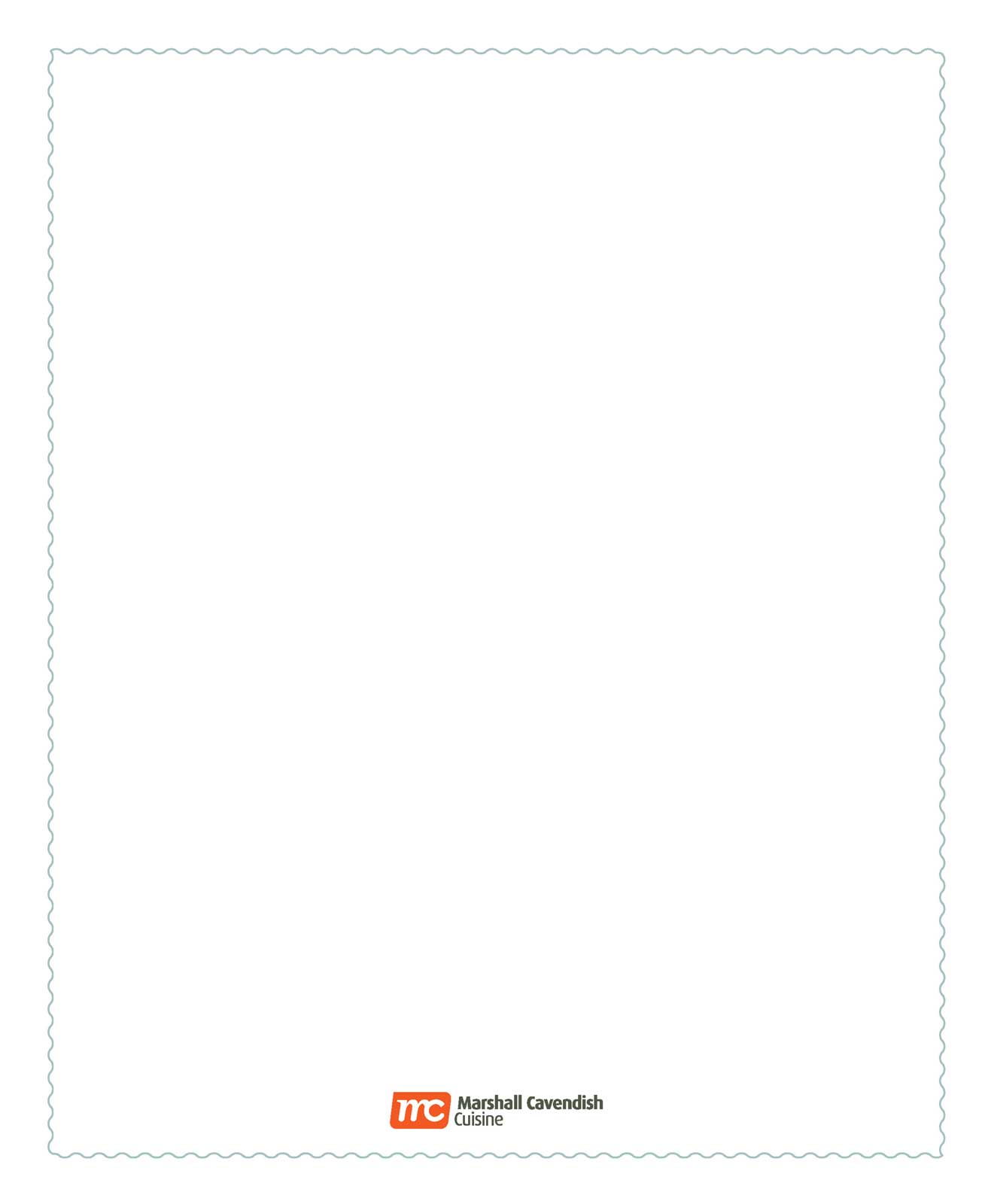Contents
No Sugar
Low Carb
No Guilt Japanese-style Desserts HISAE SAKAMOTO
Sous Chef: Natsumi Maki Assistant to Hisae Sakamoto: Junko Burton Photographer: Tetsuyuki Yamada Photo Director: Hal Suzuki (Planet Ads and Design P/L, Singapore) Props: Sinless Lab Food Design, Kyoto Cover Model: Keira Elizabeth Steele First published in Japanese by Shuwa System Co., Ltd, 2018 This English edition 2018 Marshall Cavendish International (Asia) Private Limited Published by Marshall Cavendish Cuisine An imprint of Marshall Cavendish International All rights reserved No part of this publication may be reproduced, stored in a retrieval system or transmitted,
in any form or by any means, electronic, mechanical, photocopying, recording or
otherwise, without the prior permission of the copyright owner. Requests for permission
should be addressed to the Publisher, Marshall Cavendish International (Asia) Private
Limited, 1 New Industrial Road, Singapore 536196. Tel: (65) 6213 9300 E-mail: Website: www.marshallcavendish.com/genref Limits of Liability/Disclaimer of Warranty: The Author and Publisher of this book have
used their best efforts in preparing this book. The Publisher makes no representation
or warranties with respect to the contents of this book and is not responsible for the
outcome of any recipe in this book. While the Publisher has reviewed each recipe
carefully, the reader may not always achieve the results desired due to variations in
ingredients, cooking temperatures and individual cooking abilities. The Publisher shall in
no event be liable for any loss of profit or any other commercial damage, including but
not limited to special, incidental, consequential, or other damages.
Other Marshall Cavendish Offices: Marshall Cavendish Corporation. 99 White Plains Road, Tarrytown NY 10591-9001,
USA Marshall Cavendish International (Thailand) Co Ltd. 253 Asoke, 12th Flr,
Sukhumvit 21 Road, Klongtoey Nua, Wattana, Bangkok 10110, Thailand Marshall
Cavendish (Malaysia) Sdn Bhd, Times Subang, Lot 46, Subang Hi-Tech Industrial Park,
Batu Tiga, 40000 Shah Alam, Selangor Darul Ehsan, Malaysia. Marshall Cavendish is a registered trademark of Times Publishing Limited National Library Board, Singapore Cataloguing-in-Publication Data Name(s): Sakamoto, Hisae. | Yamada, Tetsuyuki, photographer. Title: No sugar, low carb, no guilt Japanese-style desserts / Hisae Sakamoto ;
photographer, Tetsuyuki Yamada.
Description: Singapore : Marshall Cavendish Cuisine, [2018] | Previously published: Shuwa System Co., Ltd, 2018. Identifier(s): OCN 1048892265 | eISBN 978 981 4828 92 5 Subject(s): LCSH: Desserts. | Sugar-free diet. | Low-carbohydrate diet. | LCGFT: Cookbooks. Classification: DDC 641.86--dc23
Contents
Cocoa Butter White Raw
Chocolates


Introduction
Ten years ago, a friend of mine was diagnosed with diabetes.
Realising that the medication prescribed by the doctors only
delayed the progress of diabetes, my friend researched fervently
on ways to treat his illness. He found a simple solution: reducing
his sugar intake. This meant cutting out table sugar and not eating
carbohydrates like white rice and refined wheat products like
pasta, noodles and white bread. Coupling this change in diet with
conscientious monitoring of his blood sugar level and exercise, my
friend found his high blood sugar level returning to normal within
two months. A year and a half later, his blood sugar level hardly
resembled that of a diabetic person. While my friends experience may suggest that sugar is bad for our
health, thats not quite true.
Our bodies require glucose (a simple
sugar) for energy. Our brains need glucose to function. What is bad
for health is the consumption of too much sugar. Eating too much
carbohydrates (complex sugars which the body breaks down into
glucose) can lead to high blood sugar and other negative health
problems such as diabetes. Yet, it is difficult to avoid sugar in our food. Sugar exists in a lot
of the food we eat, even vegetables.
However, complex sugars
being a large part of the human diet is a fairly recent development.
Although it is said that humans have been around for more than
200,000 years, the practice of growing and processing cereal grains
such as wheat and rice to make bread, pasta and white rice began
only about 2,000 years ago. Before that, humans survived mainly on
fruits, meat and fish. An interesting article published in the journal
Human Nutrition in 2004 has even suggested that the human body
has not adapted to the consumption of carbohydrates as a staple
food, and I too wonder whether we humans are truly able to digest
carbohydrates well. As a patissier and nutritionist, I considered this research and the
foods that my diabetic friend had to avoid, and it inspired me to
develop desserts that are low in carbohydrates and made without
regular sugar. I started looking into sugar substitutes.
Sugar substitutes appear to be the perfect solution for those who
want or need to limit their sugar intake.
However, we have to be
particular about the kind of substitutes we choose because some
of them pose health risks. Generally, there are three major groups
of sweeteners. Artificial sweeteners, like saccharin, fall into one
group. These are produced synthetically and could potentially have
negative effects if taken long term. The second group consists of
natural sweeteners extracted from plants. One example is stevia,
which is derived from the leaves of a stevia plant.
Sugar alcohols
make up the last group. Similar to the second group of sweeteners,
they are derived from plants or fruits such as apples, strawberries
and pears. Sugar is extracted from the plant and combined with
hydrogen to form sugar alcohol. Xylitol and sorbitol are examples
of sugar alcohol. The sweetener I chose to use in my recipes is made of a sugar
alcohol called erythritol and sugar extracted from monk fruit, also
known as luo han guo. It is much sweeter than regular sugar, so a
little goes a long way.
The friend I mentioned earlier enjoys the desserts that I make often,
and continues to have a normal blood sugar level. After meeting
countless like-minded people who want to take care of their health
and struggle with a long list of foods to avoid, especially desserts,
I decided to put together this book. I hope that anyone reading this

















